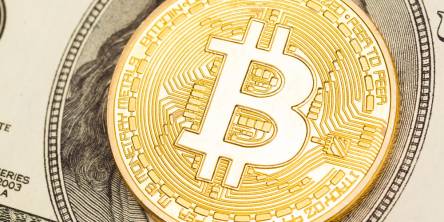Mastering Market Timing: How the US Economic Calendar Shapes Smarter Trading Decisions

Every trader knows that success in financial markets depends on timing. Whether you are investing in stocks, currencies, or commodities, understanding market-moving events is essential. The US economic calendar serves as one of the most powerful tools for traders and investors who want to stay ahead of market shifts.
It provides a structured overview of scheduled economic reports, government data releases, and financial events that influence market sentiment. From GDP figures and employment data to inflation reports and interest rate announcements, every entry on the US economic calendar carries the potential to move markets dramatically.
For both beginners and experienced traders, learning how to interpret and use this calendar can mean the difference between making informed decisions and reacting too late.
Understanding the US Economic Calendar
The US economic calendar is a schedule of important economic events and data releases from the United States. It includes indicators that reflect the country’s financial health and performance, influencing both domestic and international markets.
Some of the most impactful indicators featured on the calendar include:
● Gross Domestic Product (GDP): Measures the total value of goods and services produced in the US, offering insight into overall economic growth.
● Non-Farm Payrolls (NFP): A critical employment report that affects the US dollar and stock market trends.
● Consumer Price Index (CPI): Tracks inflation by measuring changes in consumer prices.
● Federal Reserve Meetings: Key moments when the central bank announces interest rate decisions and monetary policy updates.
● Retail Sales and Consumer Confidence Reports: These reports reflect the health of consumer spending, which drives a significant portion of the US economy.
Each of these indicators provides unique information about market trends and investor sentiment. Traders who closely monitor the US economic calendar can prepare strategies in advance of major data releases, positioning themselves advantageously for potential price movements.
Why the US Economic Calendar Matters to Traders Worldwide
The influence of the US economy extends far beyond its borders. Since the US dollar serves as the world’s primary reserve currency, economic data from the United States significantly impacts virtually every asset class, including stocks, foreign exchange, cryptocurrencies, and commodities.
A strong US jobs report, for example, may strengthen the dollar and push gold prices lower. At the same time, weak inflation data could influence the Federal Reserve to adopt a more accommodative monetary policy. Traders around the globe use the US economic calendar to anticipate such reactions and plan accordingly.
This calendar also helps traders manage risk more effectively. By knowing when high-impact events are scheduled, they can avoid unnecessary exposure during periods of high volatility or capitalize on potential opportunities created by sudden market movements.
Using the US Economic Calendar for Smarter Trading
To maximize its benefits, traders must learn how to interpret the data and act strategically. Here’s how professionals integrate the US economic calendar into their trading plans:
1. Preparation and Planning
Successful traders prepare before making decisions. They study upcoming events and assess how past data releases have impacted market trends. This preparation allows them to anticipate possible outcomes and adjust their trading positions accordingly.
2. Volatility Awareness
Certain economic announcements, such as interest rate decisions or job reports, cause significant volatility. By tracking these events, traders can decide whether to enter or exit positions based on their risk tolerance.
3. Strategic Timing
The US economic calendar helps traders time their trades more effectively. For instance, if an investor expects a positive GDP report, they might take a bullish position on the US dollar before the data is released.
4. Post-Event Analysis
Once data is published, traders review how markets react compared to expectations. This helps refine future strategies and improve decision-making accuracy.
By incorporating these practices, traders turn information into opportunity, transforming raw data into actionable insights.
Key Economic Events to Watch on the US Economic Calendar
While every trader’s strategy differs, several key reports consistently influence the global financial landscape:
● Federal Open Market Committee (FOMC) Statements: The Federal Reserve’s comments about monetary policy can spark significant market reactions.
● Unemployment Rate: A major indicator of economic strength that affects interest rate expectations and investor confidence.
● Producer Price Index (PPI): Measures price changes from the producer’s perspective, often serving as an early signal of consumer inflation.
● Trade Balance Data: Reflects the difference between exports and imports, influencing currency valuations.
● Consumer Sentiment Surveys: Provide insight into household confidence and future spending behavior.
Monitoring these reports helps traders anticipate not just short-term volatility but also long-term market trends.
Integrating Tools with the US Economic Calendar
To make full use of the US economic calendar, traders often pair it with analytical platforms that offer live data and charting capabilities. Tools that combine real-time market data with customizable alerts help traders stay informed without constantly monitoring every news outlet.
Advanced charting tools allow users to visualize how specific economic indicators affect price movements. When combined with the calendar, traders can identify correlations, track patterns, and forecast potential outcomes.
This integrated approach enables both technical and fundamental traders to make informed, data-driven decisions.
Discipline, Research, and Preparation: The True Formula for Success
Trading is not about luck or guesswork; it is about discipline, preparation, and informed decision-making. The US economic calendar serves as the foundation for that preparation, guiding traders through a landscape filled with opportunities and risks.
By developing a routine around data analysis, traders cultivate patience and resilience. Understanding that every economic release can influence market direction encourages thoughtful strategy rather than impulsive reactions.
In this way, the calendar becomes more than a schedule; it becomes a roadmap toward smarter, more confident trading.
Conclusion
In today’s fast-paced markets, preparation is everything. The US economic calendar empowers traders to anticipate, analyze, and act with precision. It helps them see beyond daily noise and focus on meaningful market signals.
By understanding how each economic event connects to broader financial movements, traders can approach every opportunity with confidence and clarity. It is a powerful reminder that in trading, success belongs to those who prepare first and move with purpose.
Similar Articles
The ability to share data and resources with multiple applications and users is a critical part of information technology.
In an ever-evolving crypto landscape, Ethereum is a pioneering force. With all its revolutionary approaches, decentralized applications (dApps) and smart contracts, Ethereum has become one of the most important blockchains and cryptocurrencies used by people worldwide, and this popularity has also impacted the Ethereum price.
When it comes to achieving financial success, you may think that becoming debt-free, investing, and saving money, are some of the ways you will get where you want
The Ethereum environment is well-known for its propensity for innovation, with new upgrades entering the market regularly and sending investors into a frenzy of predictions and estimations
Bitcoin is the first cryptocurrency ever created, with the huge merit of inspiring all the other cryptocurrencies developed after. Cryptocurrencies have been present for some time already, and people know a lot about them, but they also have questions about this intriguing space, as cryptocurrencies have difficult notions to grasp
Ordinals are much like NFTs on other blockchains and are created by inscribing Satoshis with data (image, text, video, and any other type of arbitrary data). These digital artifacts don’t store data off-chain and don’t use smart contracts, although they’re perfectly compatible
The Indian stock market is the best place for wealth generation. If you are a seasoned professional or a beginner investor, you need a thorough understanding of the stock market to make wise decisions.
With all the ascensions and popularity achieved by cryptocurrencies in the last few years, it would be fishy to claim that investing in one or two digital coins has never crossed your mind.
Australia's stable economy and regulatory framework provide a conducive environment for domestic and international investors exploring investment opportunities. This comprehensive guide will walk you through buying Bitcoin in Australia, providing a clear and concise roadmap to kickstart your cryptocurrency journey.









